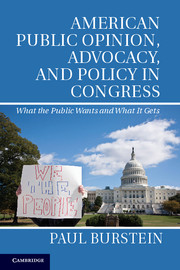1 - Introduction
Published online by Cambridge University Press: 05 June 2014
Summary
The first day of the 101st Congress, January 3, 1989, was a busy one, as the first day of a new congress always is. Four hundred and thirty-three bills were introduced in the House of Representatives. Some were potentially important to everyone in the United States (such as H.R. 16, “to provide a program of national health insurance”), some to a smaller but nevertheless substantial number of people (H.R. 1, “to establish a National Housing Trust to assist first-time home buyers), some to only a few (H.R. 27, “to direct the Secretary of the Interior to acquire certain real property adjacent to the Andrew Johnson National Historic Site in Greeneville, Tennessee, for inclusion within the national cemetery located in that site”).
By the time the 101st Congress adjourned on October 27, 1990, 5,977 public bills had been introduced in the House and 3,271 in the Senate. Some of these were taken seriously enough to be the subject of committee hearings; some of these were debated in the House or Senate; and some of those debated were enacted into law. But the winnowing process was intense. Of the 433 bills introduced on the first day, only eleven became law. Of the thousands introduced during the entire congress (some of which were duplicates), 650 became law – a small fraction of the total.
- Type
- Chapter
- Information
- American Public Opinion, Advocacy, and Policy in CongressWhat the Public Wants and What It Gets, pp. 1 - 19Publisher: Cambridge University PressPrint publication year: 2014

